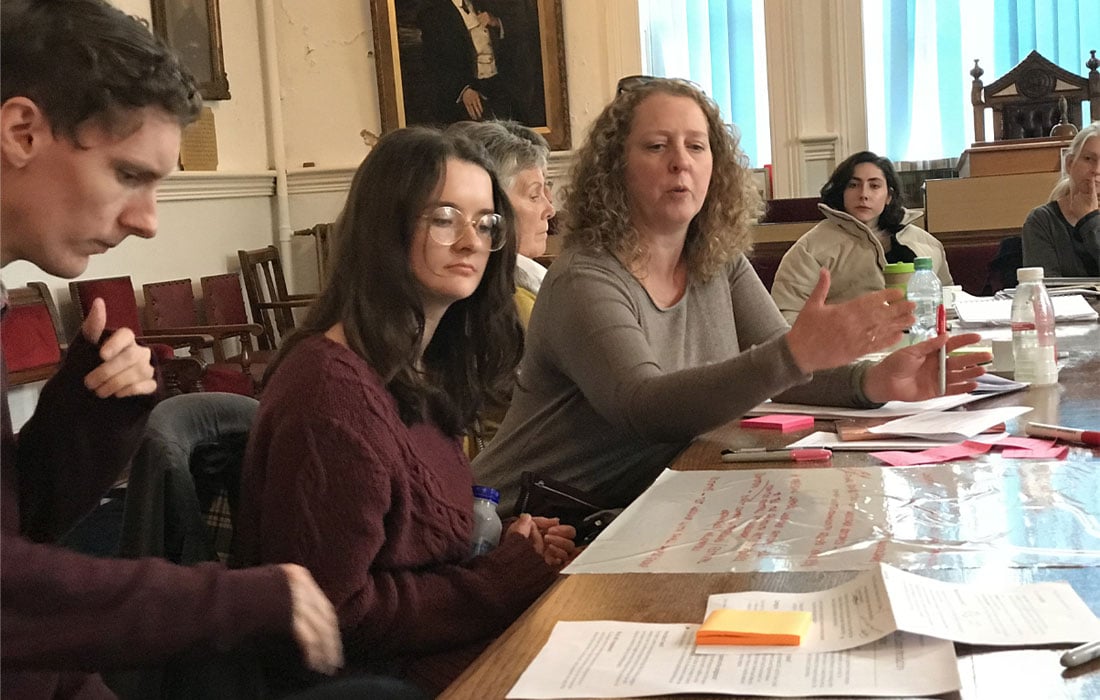
10 tips for making collaborative leadership work
An approach that prioritises trust, values and flexibility has helped museums in Cornwall share knowledge and expertise across a dispersed rural network, writes Emmie Kell.
For the last four years, Cornwall Museums Partnership (CMP) has been helping museums across the county become more open and connected to the people they serve. We set out with a clear aim to effect some fundamental changes by creating a collaborative culture within our own charity and across the museum sector in Cornwall. As an infrastructure charity that doesn’t run or own any museums, influencing ‘beyond authority’ is core to our approach. We believe that the power lies in the team.
Collaborative leadership needs people who can be open, flexible and responsive
Back in 2011, museums in Cornwall were experiencing something of a crisis. Long term under-investment in the sector meant there was a widespread lack of resources, and organisations spread over a large rural region were working in isolated ways. Many museums were becoming less, not more, resilient. They did not have the capacity to move forward. It was clear that the possibility of sharing skills across a diverse, dispersed network needed to be explored.
Bringing about change in this context required us to think about principles of ‘adhocracy’ rather than bureaucracy. We wanted flexible, adaptable, informal structures, not command and control. We wanted to find a way to harness the knowledge and expertise of a wide range of stakeholders, including the communities served by museums. So we set about testing the opportunities arising from collaborative working. CMP was formally established in 2015, and it has now grown to a network of 70 museums.
We embrace collaborative leadership – where “leaders use the power of influence rather than positional authority to engage and align people, focus their teams, sustain momentum and perform”. Our model recognises that expertise is located across different organisations. We try to create opportunities to share and amplify best practice wherever it is found. The approach is echoed by a report published last year by Arts Council England and Kings College London, which said that “leadership in museums in no longer a question of focusing on the people at the top. It’s about creating opportunities for individuals to lead at all levels”.
Creating a collaborative leadership culture
Here’s ten things I’ve learned about creating a collaborative culture over the last few years:
- Recruit to your values. We are collaborative and we stress this in our recruitment. It is still a relatively new approach for some people, who may come with expectations about command and control: the default model is still hierarchical. Collaborative leadership needs people who can be open, flexible and responsive.
- Invest in the network. We facilitate a range of networks across museums and we actively contribute to wider networks within and beyond the cultural sector. This is critical to our ability to access new resources, skills and markets. We learn a huge amount from other sectors.
- Establish a shared sense of purpose. This is the difference between productive and unproductive collaboration. Within the CMP team, two team away days a year help reinforce our charity’s purpose. For every initiative we work on, we also clearly establish and reiterate what we’re aiming to achieve. Partnership agreements are an important part of this, and it’s worth spending time on them. Talk through the contents before signing, and be clear about roles and responsibilities.
- Create a culture of trust. To be trusted we must prove our ability to deliver and communicate our impact. We also need to trust our team and invest in them. We’ve invested in facilitation and coaching training for all members of the CMP team, and made this learning available to the wider network by holding our own training sessions. We’re clear about our values, and the behaviours that arise from them. This provides clarity and direction and helps us to do things consistently – which in turn builds trust.
- Listen. A high degree of emotional intelligence is what marks out the people who thrive in a collaborative environment. If you care about maximising your public benefit, you have to be genuinely interested in what people think. You need to ask the right questions within the team, to help its members reflect and adapt.
- Look after yourself. I’m learning that acting in a genuinely collaborative way takes time, negotiation, persistence, patience and relentless positivity. It can be exhausting and lead to overload and burnout. You need to look after yourself and the wellbeing of your team.
- Be aware of the impact of the systems and structures you work with. Some processes, particularly around investment, can make collaborative working harder. We often find ourselves trying to work within frameworks designed for individual organisations, or which expect a high degree of certainty. Early and regular conversations with funders about the – usually unintended – consequences of investment design can help mitigate some of the risk.
- Recognise and celebrate excellence. Creating opportunities to share success is important in helping people to feel a part of something. Our annual Heritage Awards event brings people together to share inspiring practice and foster a sense of purpose.
- Expect conflict and plan for it. There will inevitably be bumps in the road: some people find it harder to work collaboratively than others. Invest in training to help you manage complex group dynamics. Include a section on conflict resolution in your partnership agreements. And know when to walk away.
- Be human. Make time to get to know people’s interests and understand how they work. Treat people like individuals and give of yourself.
Emmie Kell is Chief Executive Officer of Cornwall Museums Partnership
cornwallmuseumspartnership.org.uk

Join the Discussion
You must be logged in to post a comment.